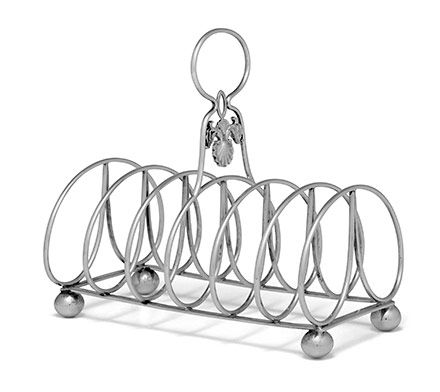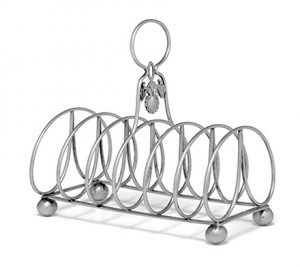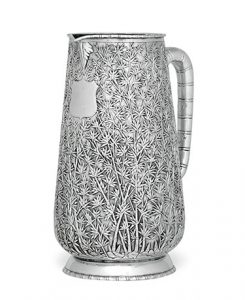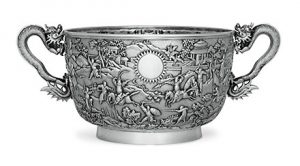
Chinese Export Silver: When East Meets West
Chinese export silver goods are sought after by many collectors. They represent an unusual confluence of Western and Eastern design. Chinese export silver as a term refers to Chinese goods made from silver specifically for Western buyers.

Early Trade Period
When trade began on a large scale between European nations and China (around 1745), Chinese artisans saw a huge influx of buyers looking for Western-style goods. Luckily for Chinese artisans, silver was cheaper in China. By the end of the 1700s, this was especially true. Mexico was pushing for independence, causing disruptions to the previously fruitful silver mines there and in South America. These disruptions made the price of silver in the Western world skyrocket. The labor costs were also lower and the ability to create silver goods was not hampered by the strict trade rules maintained by the Chinese emperor and Queen Elizabeth. This made it easy for Chinese silversmiths to create Western-style goods at a fraction of the cost. Most of this production took place in the port city of Guangzhou, also known as Canton. In the early trade period, Chinese artisans crafted imitation Western goods that mimicked both the form and design of Western goods. Early goods even had marks on the bottom meant to imitate hallmarks.
Middle Trade Period

By the mid-1800s, Chinese artisans had begun adding Chinese motifs to their goods. Classic British designs now had popular Chinese symbols like bamboo trees, dragons, and lotuses. These symbols had strong power in Chinese culture. Other common images that denote a silver piece as likely Chinese in origin are chrysanthemums, plum blossoms, orchids, phoenixes, peonies, and irises. The marks on the bottom identified the silversmiths with a combination of Latin lettering and logo-like pictures.
Late Trade Period
By the late trade period, ranging from the end of the 19th century through the mid 20th century, artisans introduced more Chinese influence into their pieces. The forms were increasingly ornate and included almost exclusively Chinese motifs and concepts. The Chinese companies that created these silver artworks also began working with Western firms like Tiffany & Co. in New York. This period dragons used as handles and feet, and lotus flowers as the bowls of silver items.

One of the most comprehensive collections of Chinese export silver is located nearby in New York City at the I.M. Chait Gallery. The gallery and auction house helped define the field of Chinese export silver and were pioneers in categorizing it. At Mark Lawson Antiques, we can help identify your silver, whether it’s Chinese export or other types of silver.
Antiques, Chinese antiques, Chinese silver, Chinese trade, global trade, Louis Comfort Tiffany, silver, silver bowl, silver goods, silver trade, silversmith
